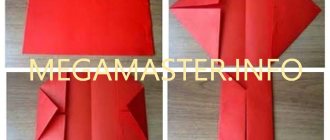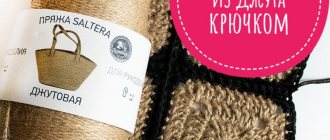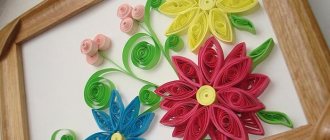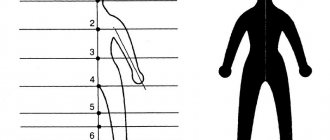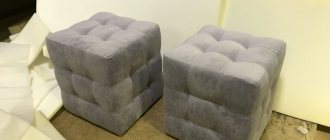Features of the material
Jute is a plant that grows in North America, Asia and Africa (it is not found in Russia). The fibers of this plant are widely used for the manufacture of various products: ropes, ropes, fabrics, bags for storing and transporting food. This popularity of this material is explained by many factors:
- Safety. Jute is resistant to any chemicals and pesticides.
- Cheapness. The material is available and has a very low cost.
- Strength. The fibers contain a special binding substance – lignin. It is thanks to him that jute is very strong and durable.
In addition, products made from jute fibers have a unique and very valuable property: if the room humidity is very high, the material absorbs drops of water (inside the fibers), but moisture does not penetrate to the underside of the product. Later, excess moisture simply evaporates. This unusual and extremely useful property only increases the interest of manufacturers in jute. Carpet manufacturers were no exception.
Let's consider the main features of products made from such exotic material:
Originality
If you have an unusual rug made of jute fibers in your home, it will attract attention. This product will be an excellent decoration for a room in an oriental or country style.
The pleasant natural color and natural shine of the material make the product very neat and attractive in appearance.
The variety of shapes of such a rug will also be an additional advantage, since you can choose a product that is ideal for your interior. In addition, jute goes well with more conventional materials for creating carpets. Therefore, more and more combined models are appearing on the modern market.
Naturalness. Since jute is a 100% natural plant fiber, products made from it are environmentally friendly and hypoallergenic. This factor is especially important for those who care about their own health and the environment.
Durability. As noted earlier, jute is an incredibly durable raw material. The product made from it will be resistant to mechanical stress and will retain its original appearance for many years.
- Hygroscopicity. Thanks to this property, jute rugs can even be placed in the bathroom. They will not slip, will not lose their shape from water, and will not accumulate excess moisture. This means that there is no need to worry about the formation of fungus or mold inside the fibers.
- Therapeutic effect. Since the threads of the exotic plant are very hard, products made from them will be excellent materials for foot massage. There are many important points on the feet that are responsible for the health of internal organs. Just walk on the mat and get a healing effect.
- Low cost. The material is available, cheap, and the price of carpets is also quite reasonable. This means that everyone can afford such an environmentally friendly, safe, useful and unusual product - regardless of their financial situation.
- Versatility. A jute rug will give your interior a complete look and make it more original. By the way, such a product is used not only for the floor, but also for decorating walls. Place the product on the floor under your workplace, in the kitchen, hallway or bathroom.
The product will fit equally organically into any room - of course, if we are not talking about an overly luxurious style (then the jute rug will look rustic). The product holds its shape perfectly, does not slip or wrinkle underfoot, so it is often used as a mat for yoga or other physical exercises.
You can choose a carpet whose top part is made of wool (artificial or natural), and the back side is made of jute. So the price of the rug becomes significantly lower. The product acquires the beneficial properties of both materials at once. It does not slip on the floor and does not accumulate moisture (thanks to jute) and is soft thanks to wool fibers.
Necessary materials for knitting a jute basket
The table lists the tools and materials needed for knitting jute baskets.
| Jute threads and rope | For knitting baskets |
| Scissors and stationery knife | To cut off excess threads |
| Crochet hook | You will need hooks No. 2.5-3.5 |
| Glue gun | For connecting pieces of rope and attaching decor |
| Large sewing threads with wide eye | To attach handles and large decorative elements |
| Tape measure | For measuring the height of the walls and the diameter of the bottom of baskets |
What can be used as decoration:
- satin ribbons;
- lace;
- large wooden and plastic beads;
- buttons;
- tulle;
- sackcloth.
Further in the article you can consider master classes on knitting various jute baskets.
How to make jute rugs with your own hands
Today we’ll talk about how to make jute rugs with your own hands. We will talk not only about a specific option, but about various techniques for creating them. We will tell you how to work with twine correctly and how to fasten the parts together. In addition, you will learn how best to make a rug depending on the size and use case.
In this article you will also find some options for inspiration. You may want to make a jute rug according to the pattern you will find below, or come up with something of your own. The main thing is to master the principle of “assembling” the parts of this accessory and choose the appropriate option, and the rest is a matter of imagination.
How to choose jute?
There are several types of twine that can be used for various crafts. Using thin jute you can decorate glasses or vases, using medium jute you can knit lace napkins and coasters, and using the thickest jute you can create larger accessories.
To knit a jute rug, it is better to choose a thread with a thickness of at least 8 mm. It will be more difficult to work with thinner jute: stitching and gluing parts will become much more difficult. And the product itself will be more durable if you fasten it well with thick rather than thin twine. For one small rug you will need at least two skeins of standard size.
Option number 1: glue the rug
The easiest option is to glue a rug from jute rope using a glue gun. Using this technique you can make a really large rug. The main condition is a thick enough rope.
The process of creating parts is simple: we wind the thread in a circle and constantly fix it with glue. We make several parts and then fasten them together.
Pros:
- speed of production;
- ease of work;
- a large rug will be easy to make.
Minuses:
- very high glue consumption;
- fragility of the product.
If you want to make a jute rug with your own hands in this way, you may find this diagram useful.
With its help you can easily and quickly glue together a fairly large and very beautiful accessory. But keep in mind that you shouldn’t walk on it every day. It’s better to just lay such a rug in the living room (for example, under a coffee table) and leave it alone - then it will last a long time.
If your rug is unstuck, simply patch the piece up using a glue gun.
Option number 2: sew a rug
If you're willing to put in more effort, choose this option. It will be much more reliable to fasten the parts of the rug using thread rather than glue. To work, you will need a strong linen thread or thin jute.
The process of creating such a rug involves permanently fixing the jute with an additional thread. Just wind the jute in a circle and constantly stitch it with thread.
Pros:
- reliable fixation;
- the ability to create additional patterns when stitching;
- budget.
Minuses
- labor intensity of the process;
- It will be difficult for beginners to sew the parts of the rug evenly so that it does not bulge.
Typically this technique is used for sewing jute rugs that will be used every day. They will not fall apart or come apart at the seams, and will serve you for a long time. Using this technique you can make a carpet for the living room/bedroom or even a door mat.
Option No. 3: knitting and sewing
This option is for those who like voluminous carpets. Be prepared for the fact that this option is the most labor-intensive of all.
For work, you can choose jute with a thickness of 6 mm. First, you need to tie ropes from jute using a hook. This is a regular set of loops - there is no need to make patterns. When the ropes are prepared, start sewing them together in a circle. This can be done using jute of smaller thickness.
Pros:
- the product is voluminous;
- ease of stitching;
- structural strength;
- finished parts are sewn together quickly.
Minuses:
- very high consumption of jute;
- It will take a lot of time to create individual parts.
Using this technique, you can make jute rugs with your own hands for any purpose - they will turn out strong, beautiful and durable.
Choose any of the suggested techniques and create your own jute rug. If you wish, you can combine the presented options: the first with the second, the second with the third, the third with the first, or all three at once. Take a look at the examples presented in the article for inspiration and make your own unique accessory.
Views: 8,028
33-podelki.ru
How to care for a jute carpet?
Since jute does not accumulate moisture and dust, it does not have to be cleaned very often. However, do not neglect the rules of hygiene so that too much dust does not form in the fibers. This is especially important if the carpet is in a children's room or bedroom.
Jute is a natural material, but it is very easy to care for. If you get a stain on your item, simply wash the stained area with detergent.
To achieve the best results, it is advisable to get rid of stains as soon as they appear. After cleaning with water, it is recommended to dry the product with a hairdryer (in a gentle mode). A stream of warm air will not disturb the structure of the material, the jute will not deform and will not stop shining. A vacuum cleaner and even a hard brush will also not be able to ruin the carpet.
Many owners of jute rugs are pleased with the affordable price and versatility of such products. Jute mats are suitable for sports, foot massage, and for flooring in the bathroom, hallway and kitchen.
Housewives are pleased with the practicality of the material, it is easy to wash, any stains are easily removed and do not eat into the material. The jute rug also pleased pet owners. When compared with analogues made from other materials, it can be noted that jute does not accumulate wool and moisture and is easy to clean. So you don't have to worry about your beloved pet's six spreading everywhere and ruining your carpet.
It is impossible not to pay attention to the fact that most customers liked the relatively low cost of this product. Jute rugs are a great investment. The main thing is to choose a quality product from a reliable manufacturer, then you will not be disappointed.
Rope or jute rug
First step. Roll the rope, starting from the center, in a spiral and cut off the end with a sharp knife.
Second step. Fix the rope with silicone glue. Apply glue from the middle to the edges in 8 - 10 places.
Third step. Glue a thick base that will cover the glue.
The second option for handicraft made from these materials is a rectangular door mat for the hallway. Let's describe its creation step by step.
To make it, you will have to buy the cheapest rug in the store, or look around the house to see if there is an old one lying around in the pantry. The main thing is that it fits in size.
1. The thickness of the rope or rope depends on the preferences of the master. It is cut to the length of the base.
2. Next, the cut pieces are glued to the base very tightly to each other using silicone glue. Leave 5-10 cm from both edges unglued.
3. Unravel another piece of rope into fibers.
4. To prevent the ends of the rope from fraying, tie them with loose fibers from the rope. To create a decorative effect, fluff the ends of the rug a little.
Benefits of homemade rugs
Firstly, it saves money, which can be spent later on more useful or pleasant purchases.
Secondly, this is the release of rag debris from apartments and attics, from things that the owners definitely won’t need, and the Russian tradition of “what if it comes in handy” doesn’t allow throwing it all away.
Thirdly, this calm activity will help calm the nerves of yourself and those around you.
Fourthly, this is the creation of a charming view of the room, the pleasure of the completed task and the praise of relatives.
Crochet rugs
Now we'll move on to a much more interesting way to create a rug - crocheting it. Many needlewomen find this process soothing, and the thick thread makes it very simple. However, keep in mind that small debris will definitely fall off the twine. Knit or lay something on the floor to make it easier to clean up later.
Openwork
Openwork rugs can be knitted using napkin patterns, one of which we will present below. Let's figure out how to make such a cute oval rug.
It will require a lot of twine and a large hook from number six at least. First, cast on the required number of air loops, which will be in the center of the rug. Then knit according to the pattern.
In fact, you can choose almost any pattern of openwork napkins. Just make sure there are not too many holes, otherwise the rug will not be dense.
Oval
This oval rug is easy to knit and looks very cute. It will be a great decoration for a living room or even a children's room.
To begin, cast on a chain of chain stitches of the required length. How to determine it? Just subtract its width from the length of the future carpet. But keep in mind that when knitting it will still stretch a little.
Knit in the round or spiral according to the pattern shown above. Don't forget to alternate columns.
Round with popcorn pattern
An interesting and rather unusual version of a round rug. It’s not at all difficult to make, just follow the diagram.
Square
Sometimes only a square or rectangular rug fits into the interior. It's easy to knit.
In order to get such a cute carpet, you need to put a chain of air loops of suitable length on a hook. In the first row, knit all the loops with double crochets and turn the product over. In the second, single crochet into the front wall of the loop and turn over again. In the third row there are regular single crochets, and the fourth duplicates the second. In the fifth - double crochets behind the back wall. Starting with the sixth row, repeat the pattern from the second to the fifth rows until you get the desired length of the finished rug.
Color
If you don't want to decorate your room with a single-color rug, you can add some color. Surely the first option that comes to mind is to paint the twine. Of course, they do this too, but for this you will have to rewind the jute into skeins, dye it, dry it, collect it into balls again... It is much easier to take yarn of the color you like. By the way, you can also use old T-shirts instead of yarn. In the master class they knit with them.
Start by making a small loop of yarn, but do not pull it too tight.
Take twine and a hook, preferably number six, and begin tying the loop with single crochets. The knitting should be very tight.
In the second row, make a pair from each column. In further rows, randomly add two columns.
After each knitted circle, place the mat on the floor. We need to see how well it fits. Are all the loops tight enough or should they be made looser?
When you get the right size, cut the thread and be sure to hem it from the inside out.
As you can see for yourself, you can even crochet a rug from twine. Moreover, the description of these master classes is simple; even a novice needlewoman can handle it. More experienced ones can come up with schemes and patterns on their own.
Carpet weaving technologies
Knitting carpets from cords can be done in different ways, but the following are popular:
- using a hook;
- on the frame;
- on the grid.
When doing needlework, it is advisable to create patterns that will give the product an original appearance. For example, large embossed rugs with patterns will look elegant and chic in the room. Additionally, small rugs are made according to the proposed schemes.
Crochet
If you want to knit a polyester carpet for the floor with your own hands, you can use a crochet hook. This is a simple craft that can be done at home. And the end result is a beautiful rug for the bedroom, living room, hallway, kitchen and other rooms.
You will need the following:
- tourniquet length 700-900 m;
- hooks No. 5 or 6;
- diagrams and templates.
Crocheting cord rugs involves using patterns. The process will be difficult and time-consuming, but you will be able to get a beautiful product with a relief pattern. For beginners, simple patterns (for example, macrame) are suitable.
The main features of knitting include:
- for round rugs you will need patterns for creating napkins;
- oval carpets are knitted according to individual patterns, and napkin samples should be taken as a basis;
- to create an oval product, a chain with lifting air loops is assembled. Double crochets are tied on both sides. The result is a ring that is filled with patterns according to the scheme;
- rug made from shreds. First, square blanks are made, then they are tied.
Crochet can be used to create various shapes of rugs. This tool works great with different cords; it can be used to create a variety of patterns and designs that will add originality and beauty to the canvas.
On the frame
A special frame can be used to make a rug. It is selected according to the size of the rug and its fragments.
Let's look at the step-by-step process of making carpets on a frame:
- Nails are placed in one row on a regular wooden frame, the distance between them should be the same.
- A thread is stretched over a row of nails; it will serve as the base.
- Next, long ribbons need to be pulled through the base in a checkerboard pattern.
- Once you reach the top, the knots will need to be tied and the carpet cut.
The frame makes the process of making the canvas much easier. Moreover, you can make it yourself from available materials. You don't need to use hooks or knitting needles for knitting.
On the grid
Weaving on a mesh is a difficult but interesting process. A fabric with holes is created, and loops of thread are placed in them. Then a mesh of air loops with the required diameter is connected. Each cell is tied with double crochets.
Yarn consumption is determined according to the size of the rug:
- for a small size of 55x55 cm squares you will need 200 m of cord;
- a round rug with a meter diameter will require 600 m of rope;
- to make a straight rectangular relief rug with dimensions of 70x80 cm, you will need 600 m of yarn.
For a carpet on a mesh, you can use polyester, cotton, or polypropylene cord. Additionally, satin ribbons are used for decoration, with the help of which they create drawings, shapes, and patterns.
Using jute in interior decoration and caring for it
To make a rug, you can take your own drawing or use ready-made patterns that describe step by step how to crochet rugs. At the same time, it is not necessary to fasten the rope from which we knit the product with glue; you can use other fastening methods.
Jute is ideal not only for creating carpets, but also for finishing furniture or interior items
You can see how to properly weave a carpet from flexible jute with your own hands by attending a master class or trying to make a small napkin-stand for the table.
In addition to jute rope carpets, many original decorations are made to complement the interior:
- you can tie jars and glasses, turning them into original vases;
- an applique in the form of a wall outline will look great on the wall in a children's room;
- jute can be used as a knitting material to create children's toys.
To care for products made from this material, you can use all products that are suitable for cleaning natural surfaces. Dirty and greasy stains can be easily washed off with ordinary detergents; the main thing is to do the cleaning immediately so that the stain does not have time to be absorbed.
An original jute tabletop finish that will certainly surprise your guests
The step-by-step process of creating a carpet can be seen in the video below.
https://youtube.com/watch?v=cdI3BRVYkE8
average rating
more than 0 ratings
Share link
Properties of jute and what is produced from it
Jute has such advantages as:
- low cost among natural fibers;
- high tensile strength;
- moisture resistance;
- keeping warm in winter and cool in summer;
- does not interfere with natural ventilation;
- do not accumulate static electricity;
- recyclable.
Jute fiber is used to make: ropes, ropes, twine, wallpaper, insulation and sealants in construction, geotextiles, and various types of packaging fabric. Due to the texture of jute fabric, it is used as an interior fabric (upholstery, curtains, tablecloths, napkins, carpets, canvases for paintings) and in the manufacture of fashionable clothing, shoes and accessories.
Braided rug
Such a floor mat can be made not only from jute, but also from linen or polypropylene twine. You will need a sheet of plywood with screws screwed in, so it is a little more difficult to make. We offer a lesson with step-by-step photos.
First, select the size of the future carpet you need and the distance that will be between the loops. Then mark the template onto a sheet of plywood. Our diagram will help you.
Take screws and plastic tubing to cover the screw threads. The screws must be secured to pre-marked locations.
Only now is it time to start weaving the rug. It is better to start not from the end of the rope, but from a quarter of its length. Be careful and strictly follow the diagram. The twine should fit exactly under or above the existing line.
Tighten the loops where necessary. Maybe some are better loosened and some are tightened tighter. Take the long end of the rope and pass it back through the weaves along the twine. There should be no overlaps, the twine lies close to the twine. It's difficult, but the finished rug will look very neat.
In the third stage, the previous one is repeated. Remember that the layers are laid evenly, not overlapping. Periodically tighten the twine so that it does not sag. Depending on the length of the rope and its thickness, the number of repetitions will vary; there are four of them in this master class. Try to keep the mat dense.
Finishing the finished product couldn't be easier. Turn it over, measure the length of the twine so that its ends meet. Cut them straight, burn the ends with a lighter to prevent them from unraveling, and sew them together.
What can you knit from jute
- jewelry, decor - pendants, belts, wall panels
- rugs, runners, coasters, serving napkins
- bags, backpacks, cosmetic bags
- boxes, baskets, pencil holders
- flower pots, vases
- boxes and bags for gifts
- bread bins, decorative plates
- washcloths (hard)
The thread is quite coarse, so it is usually not used for knitting clothes. But this property helps the product keep its shape well. Especially if you crochet it.
Knitted rug for the front door
The product near the front door is constantly exposed to external influences. It collects dust and dirt from the street, and in winter there may be leftover snow from shoes on it. This is precisely the main quality of a carpet: it must be made of durable, dense material. Otherwise, you will not have time to exchange the item for a new one.
Knitted rug
To make a rug yourself, you will need the following raw materials:
- garbage (or regular) bag strips that can be easily washed with water to remove dirt;
- polyester cord;
- jute rope;
- twine or rope.
This product is knitted using a special technology, which can be found on the Internet.
Knitted rug
You can also make a rug from strips of old clothes. But then you need to have a large supply of old clothes and a love of knitting, since the fabric product quickly becomes unusable. Openwork rugs are definitely not suitable for the hallway.
Knitted rug
Colored runner is ideal for long corridors
How to choose a cord for knitting a carpet
Before you start knitting a rug, you should choose a suitable cord. It is important to give preference to reliable material so that the product is dense and wear-resistant. Experts recommend using polyester cord for knitting. It is made of durable synthetic fiber.
Carpets made from this raw material do not fade for a long time when exposed to sunlight. This means that the colors will always be bright and rich, and the products will be elegant.
There are other types of cords that are suitable for knitting rugs:
- cotton They have a hypoallergenic base, odorless, and are absolutely safe. These qualities allow the material to be used for making small rugs for a children's room. But do not forget about the negative qualities - high consumption, low elasticity, the product turns out to be rough, cotton cord is difficult to work with;
- polypropylene. Carpets have a bright shine. When working, the material slides and creaks a lot. The products can be cleaned and washed.
Any material can be used for knitting. Each of them will allow you to get a dense and durable rug that can easily last for several years.
Making jute carpets for sale
Jute carpets on apartment floors are a new feature. Walking barefoot on such carpets is pleasant and warm. Products made from jute rope resist heavy stains well. Therefore, these rugs are often found in the hallway. Probably, the popularity of such a carpet lies in its low price and the ability to make it yourself from quite affordable and practical materials. The only thing is that in houses where there are animals (especially cats), buying and laying such carpets on the floor is a waste of money.
Jute rope is a rope, two or three strands, produced by twisting or weaving from jute yarn. Jute is grown in Bangladesh. The uses of this rope are very diverse. In our case, we will weave carpets from this rope.
Jute rope is sold wound in reels. Real jute is golden in color, not grey. The rope for making a rug must have an even and strong winding of fibers, without fringe. The optimal rope for weaving is 8-10mm in diameter. If you take more, it will be difficult to work with it; a thin one may not lie very nicely. The cost of a rope with a diameter of 8 mm is 8 rubles per linear meter.
Manufacturing technology of jute carpets.
The simplest technique is glue. In this option, the rug is created right before your eyes. Take the oilcloth and lay it on the table or floor. It depends on the place where you will be working. The end of the jute rope is placed in the center of the oilcloth and secured with glue. It's better to use a glue gun. And we begin to wind the rope around, fixing it with glue after 20-30 cm. Having wound a circle of the required size, the rope is cut and the end is glued to the product. Excess oilcloth is cut off. Next they make the second, third, etc., the circles are also fastened together with glue
The second technique is used to make such a rug stronger. For production in this case, not glue is used, but nylon threads. The basis for the rug in this version is burlap or tarpaulin. Rugs made in this way can withstand a lot and compete with factory-made rugs.
There is a third option for making jute carpets. This is weaving and knitting. In this case, jute with a diameter of 6 mm is used. If you take it thicker, it will be more difficult to work, your hands will get tired. Knitted rope patterns are also stitched together. This option is the most difficult.
Additional manufacturing data. If you want to dye jute rope in different colors, then to get exactly the color you need, the rope should be bleached. We do this using bleaching agents. Many people dye rope with hair dyes, some use food coloring. The simplest thing is acrylic paints. Using dyes already on the finished product, without dyeing the threads themselves. In this case, you can experiment with colors in a very interesting way.
Weaving features
The hands of craftswomen create amazing examples of products using the macrame technique. The experience gained and constant improvement of skills will help you become a true master.
Initially, you need to equip a place for classes.
You will need the following tools:
- multi-colored threads;
- scissors;
- thick and thin hooks;
- board covered with cotton wool;
- pins;
- needles with a large eye;
- ruler or measuring tape;
- clamps (vises);
- glue;
- weights;
- lighter or matches;
- metal rings.
Macrame is woven from different threads. The main requirement for them is a smooth, rounded cut and good curl. When woven, they form a clear and beautiful pattern.
Threads from 0.8 mm to 5 mm in thickness are ideal. The thinner the thread, the smaller the product will be.
Light or pastel shades of thread look great. You can decorate the craft with beads, beads, balls, sticks, wooden rings, or weave it on a wire frame.
Suitable threads from any material:
- Waxed - thin cotton or synthetic thread impregnated with wax, up to 2 mm thick. Ideal for weaving jewelry. It can be threaded into beads and weaved into small details and crafts. For needlework, thread with a thickness of 0.8 mm and 1 mm is used. This material is short-lived, so products quickly lose their original appearance.
- Cotton - thread 1-5 mm thick.
- Soutache is a flat finishing cord intended for sewing and weaving.
- Jute - it is woven from the jute plant. Thickness - from 1 mm to 4 mm. Both large and small things are woven from it. This rough material must be boiled and handled with gloves.
- Sisal - strands of hard plant material. They are used to weave hammocks and scratching posts for cats.
- Silk - it needs to be lubricated with glue so that it does not slip. While working, you should constantly moisten your fingers in water and tie the knots very tightly.
- Floss is ideal for creating jewelry and small crafts.
- Cotton knitting yarn is a fine yarn that needs to be folded in half, so you need to be careful how the knots lie evenly. Suitable threads for macrame are Iris, Chamomile, Lotus, Camellia, Rose. Small items are woven from cotton yarn: jewelry, pendants, bracelets.
- Linen cord is about 3 mm thick, which is ideal for bulky work.
- Wool yarn - twisted threads fit well into knots for soft products.
- Polypropylene laundry cord is a rope with a thickness of 1.5 mm, from which panels and bags are woven. White cords are most common, but other colors can be found.
- Polypropylene twine is a rigid twisted cord. While working, you need to protect your hands with gloves from calluses and periodically wet your hands with water.
- Polypropylene yarn - similar in properties to twine, but a little thinner.
- Lurex is a glossy synthetic thread that needs to be tied very tightly.
- Fishing thread is a slippery thread 0.7-1.5 mm thick, from which bracelets, belts, and jewelry are woven. It is not easy to tie knots with it.
- Nylon is a thin synthetic material for tiny crafts. It is fusible, so the threads retain their original shape.
- Macrame yarn is a synthetic yarn about 1.5 mm thick, soft and pleasant to the touch.
Crochet twine rugs - tips for making your own
Let’s immediately clarify what kind of twine we are talking about. This is essentially a household rope, but the rope is not paper, not flax, but jute. The first two types of rope are made in several twists, are uneven in width, rough, and are suitable only for household needs.
Jute twine is used to make rugs.
Jute is a natural, durable material, has high strength and hygroscopicity, is very pliable, it can be given any shape and painted in the desired color.
Twine rugs hold their shape well and do not crumple underfoot.
There are three ways to make twine rugs:
- on glue
- sewing parts
- crocheted.
You can make a jute rug with your own hands by twisting the rope into small circles, ovals, or laying it in fancy patterns. The parts are glued together with a glue gun.
It is not difficult to create such a rug or even a very large carpet, however, this method has disadvantages: a very large consumption of glue. In addition, such rugs are not practical; it is not even recommended to walk on them.
You can, of course, sew the parts together with a needle and thread.
But I’m still interested in the third option – crocheting.
Crocheting with jute is a pleasure. I already had such experience in creating boxes and baskets. Since the thread is thick, the whole process happens quite quickly. The only trouble is the debris that falls from the twine. Therefore, you need to knit on the bare floor, not on a carpet, or lay something down to make it easier to clean up later.
You also need to choose the right material and then carry out some more manipulations, especially with rugs.
Which twine to choose
Household twine, as I already said, is not suitable for knitting rugs; the product from them will not be beautiful and neat.
It is better to buy jute twine wound on cylindrical bobbins, rather than in skeins and balls.
The color of the threads is golden, not gray.
You should also pay attention to the quality of the winding: it should be even, tight and beautiful. On good jute, the winding is made with triangles
The rope should have a twist of 2 threads, each one mm thick. Those. twine thickness – 2 mm.
The parameters indicated on the labels are: 2x560 tex (2 – number of twists, 560 – density), according to which we select twine in a hardware store, or better yet, in a craft store.
Twine consumption
Twine spools are available in different weights: 0.5 kg, 1 kg; 1.5 kg.
It is better to knit rugs in two folds, i.e. from two reels at the same time.
A rug with a diameter of one meter requires about 1200 grams of thread. For your information, one reel contains 0.5 kg - about 400 meters.
And accordingly, for knitting from such a thickness of rope, a hook with number 6 is suitable.
Colored finish
To decorate rugs with colored fragments, it is better to use ordinary wool yarn for knitting (cheap Circassian or rustic).
This yarn usually has a twist of two or three strands. We take yarn in three twists in two folds, just like twine, and from 2 twists we fold it into three threads.
Although the twine can be dyed and bleached, carrying out such procedures with a large amount of jute for rugs is not convenient and takes a long time. After all, rewinding into small skeins, dyeing, drying, and rewinding into balls can only be done in very small batches.
Heat treatment of the finished rug
A rug knitted from twine will initially be hard, rough, wooden and unsightly, all the posts in it will stand like a stake.
To correct this situation, the rug must be washed and steamed with an iron.
Wash
To wash small rugs weighing up to 4-5 kg, you can use a washing machine.
Washing mode: delicate, temperature – no higher than 30 degrees. Jute products cannot be washed at high temperatures. In principle, the rules are the same as for woolen items.
There is no need to pour powder; it is better to use liquid detergent for woolen or delicate items.
After washing, the rug will be saturated with water and it would be better to dry it on special racks, where the water will flow down. But if there are none, we dry the rug on the floor, laying it out with plastic bags and straightening it out thoroughly.
As the fibers dry, they become softer right before your eyes.
Ironing
After the rug has dried, it should be ironed with a very hot iron, or rather steamed through 2 layers of wet cloth (not gauze). There is no need to press hard with your hand; we apply the iron to the product and, starting from the middle part, smoothly smooth it out to the edges.
When ironing the edges, we correct the edge of the product.
First, iron from the front side, and 10 minutes later, after the rug has cooled and dried, iron from the back.
The fibers of the twine will return to their original state, will remember it in it and will remain forever even after subsequent washes.
After heat treatment, a jute rug will become soft, smooth, and amazingly beautiful.
What types of jute materials are used in handicrafts?
well-known burlap , which in Europe is called Hessian fabric, is made from jute. Durable and rough burlap is used for industrial and household needs and is a very popular material among artisans.
Another type of jute fabric resembles cotton. Suitable for scrapbooking, applique, Japanese patchwork, sewing doll clothes, curtains, decorative pillows; for sewing clothes in boho, vintage, Provence and other styles.
Coarser fibers are used to make jute mesh , which is most often used in floristry.
Braid, ribbons and jute lace are an excellent material for many types of creativity. The beautiful texture gives the products a stylish look; connects disparate elements together.
Jute rope and twine are ropes twisted from thin fibers. The rope can be multi-strand or single-strand. Twine is usually sold in skeins, balls or reels weighing 0.05-2.5 kg, length 40-1200 meters, diameter from 1 to 5 mm. The diameter of the jute rope is from 6 to 60 mm.
Jute rope diameter
The natural color of the rope depends on the variety - from light gray to reddish-straw. For needlework, it is recommended to take jute rope in golden shades , since natural gray-green shades often indicate the low quality of the raw materials. bleached or dyed jute yarn on sale ; it differs from packaging twine in having a uniform structure along the entire length of the thread, without lumps and debris, and is treated with softeners. Products made from this yarn are soft and less scratchy.
Approximate consumption of twine and rope for various crafts
For knitting carpets, jute twine with a thickness of 2 mm or more is used. For example, for a carpet measuring 100 x 100 cm, you will need 1100 meters of jute twine 3 mm thick. To create carpets by weaving or gluing, use a rope with a thickness of 6 mm. To knit the walls of baskets, bags, lampshades or toys, use 1.5-4 mm twine. For example, 700 meters of double-strand twine 2 mm thick is enough for 2 large bags or 3-4 small ones. Handles for bags or bottoms of baskets are made from rope with a diameter of 6-8 mm. For jute filigree, two- or three-strand jute with a diameter of 2 or 3 mm is used. A rope with a thickness of 6-10 mm is suitable for making scratching posts.
Basic macrame knots
To master the art of macrame, you need to master the technique of knitting basic knots.
The main knots are the simple Herculean knot and the square flat knot. Although there are a great many different knots in macrame, they are most often based on these basic knots.
Secure the two cords. Then place the right cord under the left one, and braid the left one into a loop. Pay attention to the diagram:
Why are they called that? What is the difference? And they differ only in the thread with which weaving of the knot began. If you start from the right side, you will get a right-handed flat knot; if the first working thread is on the left, you will get a left-handed flat knot.
For a sample, take a couple of short length threads. Secure them vertically to the pillow. Threads No. 2 and No. 3 in the middle (axial) are the base, and we will knit with working threads No. 1 and No. 4.
We take thread No. 4 with our right hand, place it on the axial threads, and then under thread No. 1. With your left hand we pull thread No. 1 under the warp and pass it from below into the loop between the warp and thread No. 4. The figure clearly shows the sequence of work.
Then we tighten the knot. Now you see why the knot is right-handed. Because we start knitting with our right hand and the working thread on the right lies on top of the warp, and the left on the bottom. The horizontal thread is used for fastening.
The left-handed flat knot is woven exactly the same as the right-handed one, only in a mirror image.
We start working with the left extreme thread No. 1. With your left hand we place it on the axial threads in the middle and under thread No. 4. Then with your right hand we grab thread No. 4 on the right, pass it under the warp and pull it from below into the resulting loop.
To weave it, you need to master the technique of knitting flat knots: left-handed and right-handed. By combining these knots with each other, you will get a square flat knot. It is necessary to finish with a lock so that the product holds tightly.
We attach 2 threads to the base using an uneven fastening. Then we begin to alternate the left-sided flat knot and the right-sided flat knot to the length we need. We will get a beautiful chain that can be used as a bracelet, a handle for a bag or a decorative basket.
Another basic knot in macrame is the rep knot. It is very similar to a voluminous lace and is called a brida.
Rep knots can be vertical, diagonal and horizontal. It all depends on the location of the axial thread.
By combining different rep knots, you can weave decorative elements into the product.
How to knit a horizontal rep knot? Pull the first thread (axial) horizontally near the working threads. Then make two turns from bottom to top and tighten the loop between turns. We repeat in the same way with another working thread. And so on until the end of the row.
If we need a vertical rep knot, then we do the opposite. The working thread here is the main thread, located vertically. Practice tying a series of rep knots, horizontal and vertical brids.
The edge of any of your products will look great, decorated with a wonderful pattern with such a frivolous name. It is woven quite simply, but looks very impressive. A tatting knot can be woven from either two or four threads. In the first case, one thread is braided by the second, and in the second, two outer threads braid a group of main threads.
Secure the working thread with a lock to the face. Bring the left thread under the warp, then over the warp and into the loop. Then bring the left thread back over the warp, then under the warp and into the loop.
How to weave a beautiful ribbon from tatting knots, knitted in pairs, see the mini master class by Yulia Zheglova:
Chinese knots very often carry a hidden sacred meaning. They are quite complex, but look elegant. One of them is called "Lotus". It is often used for weaving various pendants and laces.
How to knit a Chinese Lotus knot. It is necessary to place two threads on the pillow, one on top of the other, and secure them with a pin. Then alternately lay the ends of the threads in a circle: the first - on the second, the second - on the third, the third - on the fourth, and thread the fourth into the loop of the first thread. Gently pull each end in a different direction until a nice knot is formed.
Let's start weaving the original rug
We cut off the bottom part of the T-shirt, which goes from the armpits, and cut this part of the T-shirt into 10 strips of equal width.
We evenly stretch the stripes onto the hula hoop (hoop) according to the principle of the arrangement of the spokes on a bicycle wheel.
Now attention! We pulled 10 strips onto the hoop, and in the end we got 20 double “spokes”. But for work we need an odd number of them, i.e. 19 "spokes". To do this, we connect two strips into one closer to the center of the intersection of the strips and tie them with the end from the working ball of yarn. This mark will serve as a guide to start weaving the rug.
We begin to weave the rug with a snake, threading the thread above and below the stretched strips (as shown in the photo). Make sure that the weaving is uniform and equally dense. Do not tighten the weave too much or weave it too loosely, otherwise the rug will become deformed and the product will end up uneven. Don't forget about the two connected stripes!
It’s good if you knitted multi-colored fabrics on your fingers and combined them into one ball - then the rug will turn out beautiful and more interesting.
I will repeat myself and remind you why you need to wind the fabric into a ball loosely (loosely): so that it can be compressed and conveniently moved between stretched strips.
When the braided part of the rug is approximately 20 cm in diameter, spread each of the strips on the hoop so that you can see two separate “spokes” (as shown in the photo), and continue weaving “over” and “under” each of the “spokes” " Do not forget that in order to maintain an odd number of working needles, one of them must remain double.
Continue weaving the rug until there is approximately 20 cm left to the edge of the hoop, then cut the strips with scissors.
Tie the paired ends of the strips along the edge of the rug.
As a decoration, you can leave the tied ends of the strips open.
Or you can hide them in the carpet from the wrong side.
Our original rug is ready. Hang it on the wall or decorate it, for example, in the center of the dining table.
Agree, such things can not only embellish the interior (another example is a DIY basket for needlework), but can also make it warmer and more comfortable.
Massage mats, woven carpets - original gifts
Master classes: original macrame gifts, how to make a hammock, wicker car seat covers, original handmade work
Sources:
- https://tytpodelki.ru/kovriki-svoimi-rukami/
- https://tytpodelki.ru/makrame/
- https://handsmake.ru/makrame-dlya-nachinayuschih-shemy-pleteniya.html
- https://sharm.click/rukodelie/makrame.html
- https://legkonauchim.ru/hobbi/kak-nauchitsya-vyazat-makrame
- https://nacrestike.ru/master-klassy-po-rukodeliyu/raznye-vidy-rukodeliya/pletenie-makrame-dlya-nachinayushhih
- https://sdelatlegko.ru/makrame/
- https://zhitiebitie.ru/vyazanie-na-palcax-prodolzhenie-pletenie-dekorativnogo-kovrika-foto/
- https://www.remontbp.com/kover-svoimi-rukami-kover-svoimi-ruk/
- https://www.pinterest.ru/bulatovsergiy123456/%D0%BA%D0%BE%D0%B2%D1%80%D0%B8%D0%BA/


